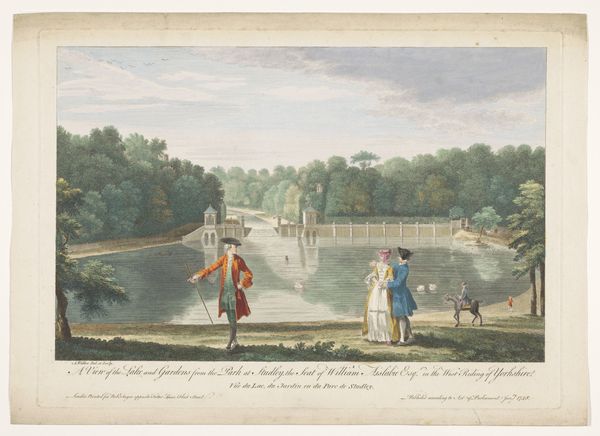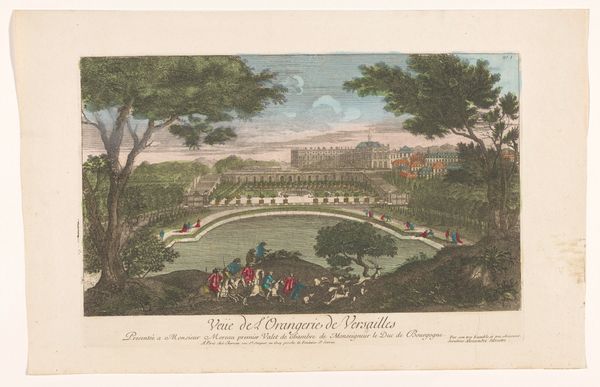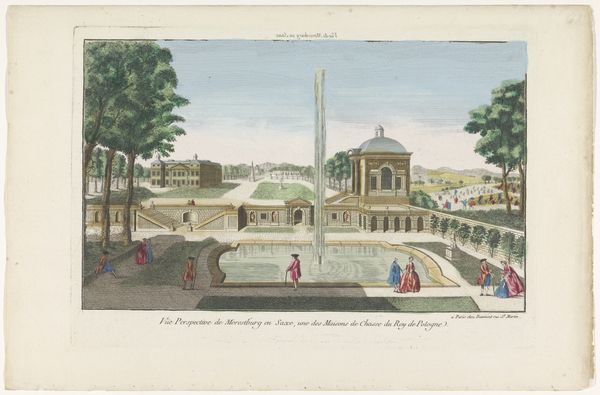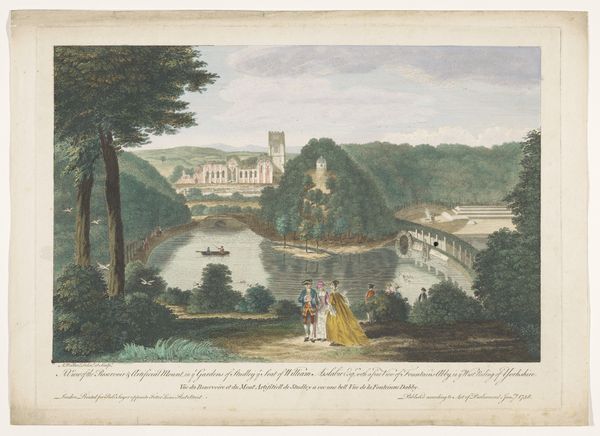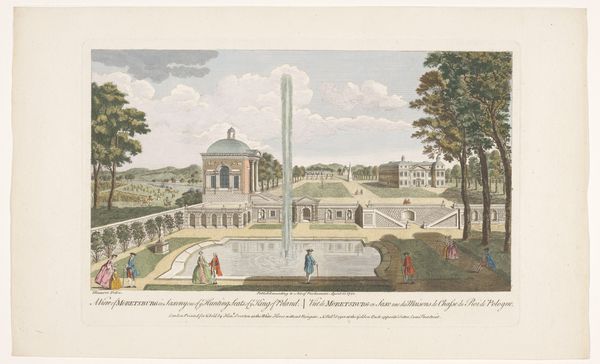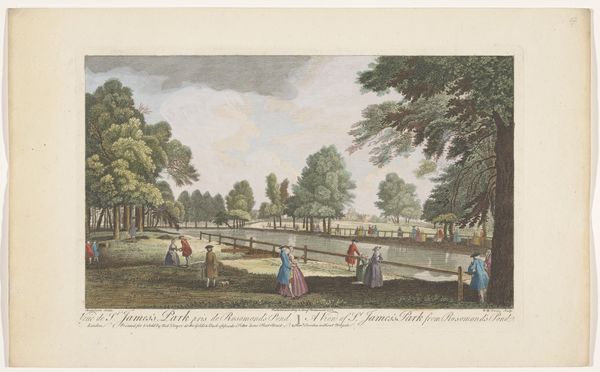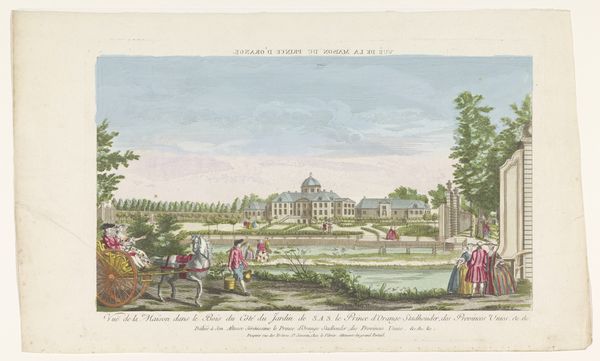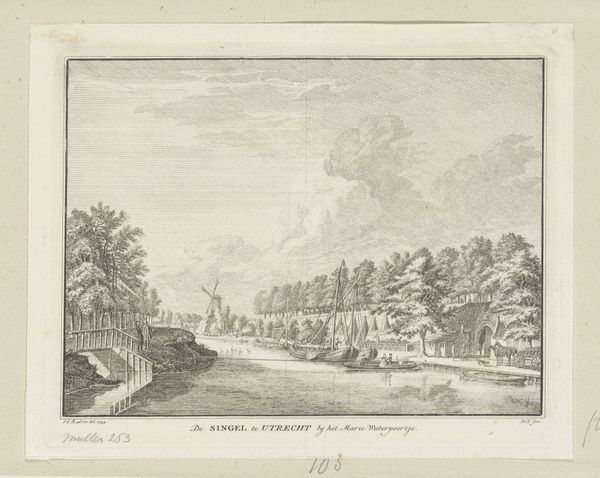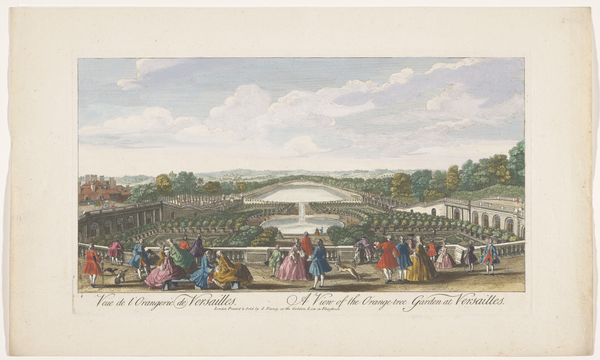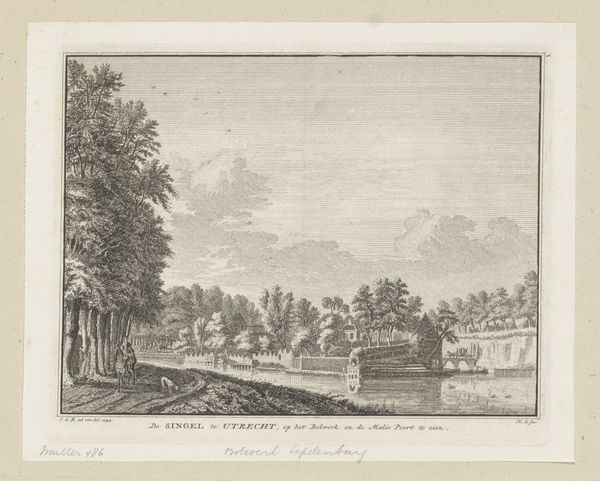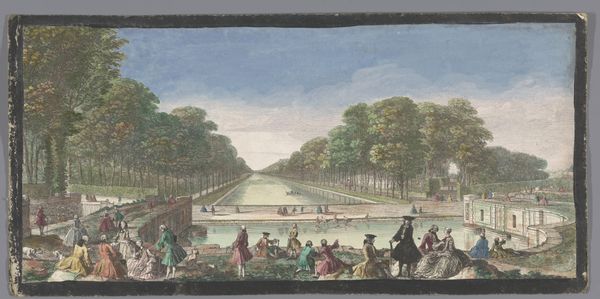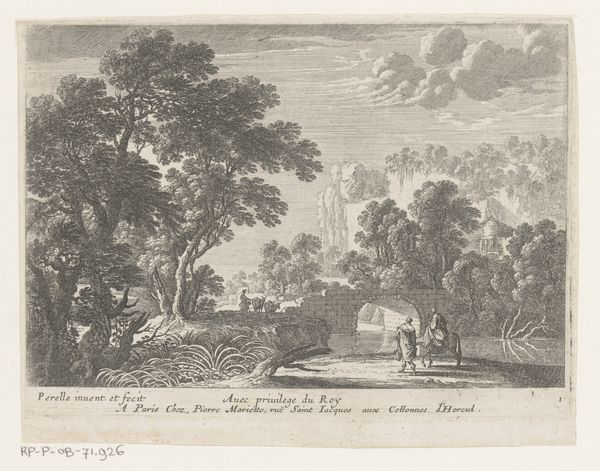
Gezicht op de Moon Pond en de Temple of Piety in Studley Royal Park te Yorkshire 1758
0:00
0:00
print, plein-air, watercolor
#
garden
#
water colours
# print
#
plein-air
#
landscape
#
watercolor
#
watercolour illustration
#
genre-painting
#
watercolor
#
rococo
Dimensions: height 337 mm, width 470 mm
Copyright: Rijks Museum: Open Domain
Curator: Here we have Robert Sayer’s "View of the Moon Pond and the Temple of Piety in Studley Royal Park, Yorkshire," created around 1758. It’s a print, likely a watercolor or a watercolour illustration if we're getting specific about the medium, depicting a carefully designed landscape. Editor: My first impression is one of immense control. It feels so perfectly, almost rigidly, balanced and symmetrical. There is not much natural rawness here, all nature seems ordered, constructed. Curator: Precisely. Look at the formal arrangement, almost theatrical. The composition invites a discussion on labor, social class, and the sheer amount of human effort required to manicure the earth like this. The Rococo style definitely celebrates human intervention, as seen here in printmaking form and in plein-air, to highlight an estate meant for display and leisurely consumption by the aristocratic class. What does that temple in the background whisper to you, iconographically? Editor: It's all very controlled, very "polite" nature, with this serene temple standing in for Enlightenment ideals – reason, order, and the artificial reshaping of nature to reflect a kind of utopian vision. The careful placement of each statue and the serpentine path invite contemplation, but on whose terms? Is piety truly being cultivated, or is this simply a display of power? Curator: Absolutely, it begs the question of who dictates these visual symbols, who gets to interpret the imagery, and for what material gain? The print itself serves as a form of early mass media, enabling wider circulation of this curated vision. Who produced it and under what constraints were these prints available and consumed? Editor: It speaks to a deeper yearning for an idealized past, for harmonious balance and the dominance of intellect. But for me, there is an undeniable tension between the artifice and any real sense of spiritual connection. The water, meant to reflect and perhaps cleanse, seems more like a decorative element rather than a vital, life-giving force. Curator: So, from materials like watercolour on paper, carefully manufactured and distributed, to its commentary on reshaping and mastering the land... This work highlights how humans interact materially with both art and the world around them to produce this controlled ideal. Editor: And by reflecting on how symbols and ideologies intertwine in such seemingly 'peaceful' scenes, we may better understand how these dynamics shape the cultural memory encoded in landscapes like this, even today.
Comments
No comments
Be the first to comment and join the conversation on the ultimate creative platform.
